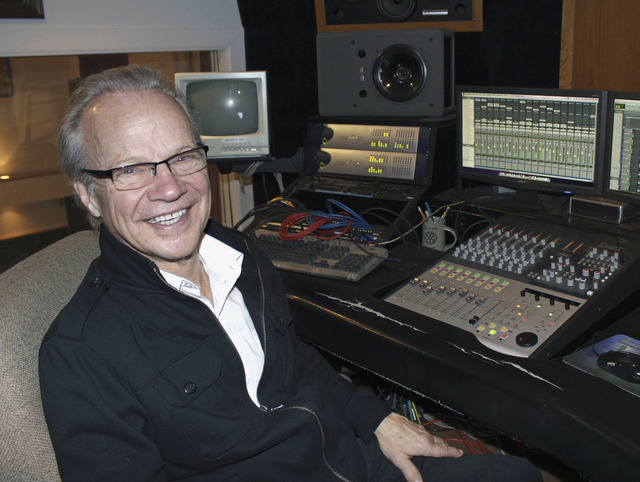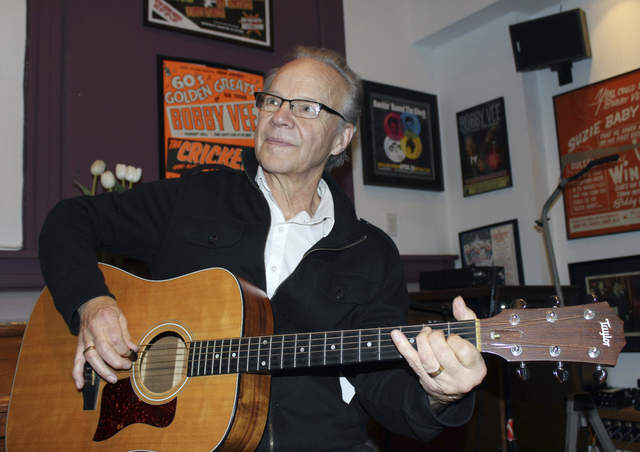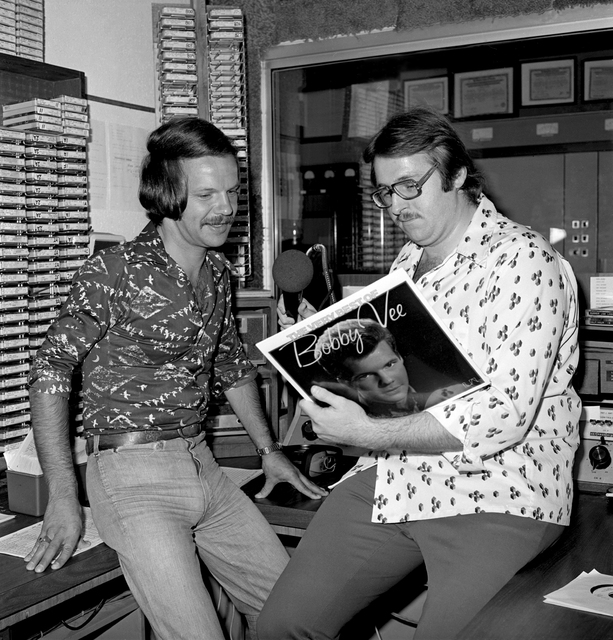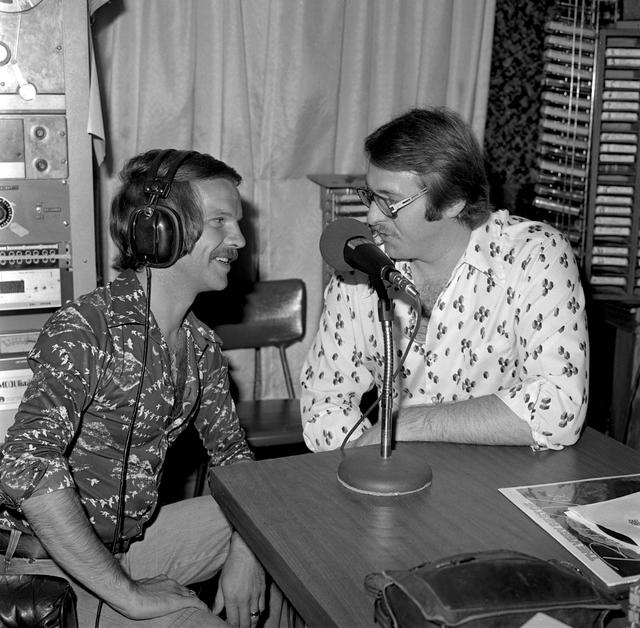1960s pop star Bobby Vee dies at 73
MINNEAPOLIS — Pop idol Bobby Vee, the boyish, grinning 1960s singer whose career was born when he took a Midwestern stage as a teenager to fill in after the 1959 plane crash that killed rock ‘n’ roll stars Buddy Holly, Ritchie Valens and J.P. “The Big Bopper” Richardson, has died. He was 73.
Vee, whose hits included the chart-topping “Take Good Care of My Baby” and who helped a young Bob Dylan get his start, died Monday of advanced Alzheimer’s disease, said his son, Jeff Velline. Vee was diagnosed with Alzheimer’s disease in 2011, and performed his last show that year.
Vee had been in memory care at The Wellstead of Rogers & Diamondcrest in Rogers, about 25 miles northwest of Minneapolis, for the past 13 months and in hospice care in recent weeks, his son said.
Vee died peacefully surrounded by family, Velline said, calling it “the end of a long hard road.”
He said his father was “a person who brought joy all over the world. That was his job.”
Born Robert Velline in Fargo, North Dakota, Vee was only 15 when he took the stage in Moorhead, Minnesota, after the Feb. 3, 1959, plane crash in Iowa that killed Holly, Valens and Richardson on their way to the concert. That dark day in rock history was commemorated by singer-songwriter Don McLean in his 1972 pop song “American Pie” as “The Day The Music Died.”
The call went out for local acts to replace Holly at his scheduled show at the Moorhead National Guard Armory. Vee and his 2-week-old band volunteered, along with three or four other bands. The show’s emcee, Charlie Boone, then a disc jockey at KFGO Radio, turned to Vee and asked him the name of his band. Vee looked at the shadows of his bandmates on the floor and answered: The Shadows.
“I didn’t have any fear right then,” Vee recalled in a 1999 interview with The Associated Press. “The fear didn’t hit me until the spotlight came on, and then I was just shattered by it. I didn’t think that I’d be able to sing. If I opened my mouth, I wasn’t sure anything would come out.”
Vee called his debut a milestone in his life, and “the start of a wonderful career.”
Within months the young singer and The Shadows, which included his older brother Bill on lead guitar, recorded Vee’s “Suzie Baby” for Soma Records in Minneapolis. It was a regional hit, and Vee soon signed with Liberty Records.
He went on to record 38 Top 100 hits from 1959 to 1970, hitting the top of the charts in 1961 with the Carole King-Gerry Goffin song “Take Good Care of My Baby,” and reaching No. 2 with the follow-up, “Run to Him.” Other Vee hits include “Rubber Ball,” ”The Night Has A Thousand Eyes,” ”Devil or Angel,” ”Come Back When You Grow Up,” ”Please Don’t Ask About Barbara” and “Punish Her.”
Besides his clear, ringing voice, Vee also was a skilled rhythm guitarist and occasional songwriter. He racked up six gold singles, but saw his hits diminish with the British Invasion of The Beatles and other English groups in the mid-1960s.
Vee kept recording into the 2000s, and maintained a steady touring schedule. But he began having trouble remembering lyrics during performances, and he was diagnosed with Alzheimer’s disease in 2011. He performed his last show that year, billed only as his retirement, during an annual community fundraiser that his family holds near their home in St. Joseph, Minnesota, about 65 miles northwest of Minneapolis. But he didn’t announce his diagnosis until a year later on his website.
In a 2013 interview with The Associated Press, Vee said he knew his abilities were diminishing and he didn’t want to put his family through a public decline.
“It’s not getting any better, I can tell you that,” Vee said. “But I’m doing the best I can.”
Vee still released a new album, “The Adobe Sessions,” a loose jam session recorded with family members in Vee’s adobe garage north of Tucson, Arizona. The 2014 album featured some of Vee’s favorite songs from Townes Van Zandt, Gordon Lightfoot and Ricky Nelson. It was released on the 55th anniversary of the Holly plane crash.
The album also included Vee’s cover of Bob Dylan’s “The Man in Me,” a nod to the folk-rock legend who got his start in Vee’s band in Fargo.
Dylan grew up in Hibbing, a town on northern Minnesota’s Iron Range, and briefly played with Vee’s band. Although their time playing together was short, Dylan had a lasting effect on Vee’s career: It was Dylan, himself going by the name Elston Gunn when he hammered on the piano at a couple of The Shadows’ gigs, who suggested Vee change his last name from Velline to Vee.
In his “Chronicles: Volume One” memoir, Dylan recalled that Vee “had a metallic, edgy tone to his voice and it was as musical as a silver bell.” When Dylan performed in St. Paul in 2013, he saluted Vee in the audience and performed “Suzie Baby.”
Vee and his wife, Karen, were married for more than 50 years. She died of kidney failure in 2015 at age 71. The couple had four children, including sons who performed with Vee.
Family members said Vee’s memory wasn’t affected so much by Alzheimer’s as his speech. During the AP interview in 2013, he answered questions but would become tongue-tied searching for the right word. Vee tried unconventional methods to alleviate his Alzheimer’s symptoms, from chiropractor visits to acupuncture, and also renewed his passion for painting.
And while he sometimes wished he could do the things that once came easily, Vee said he was “not going to cry about it.”
“God brought me home,” he said. “And that’s the deal.”

























